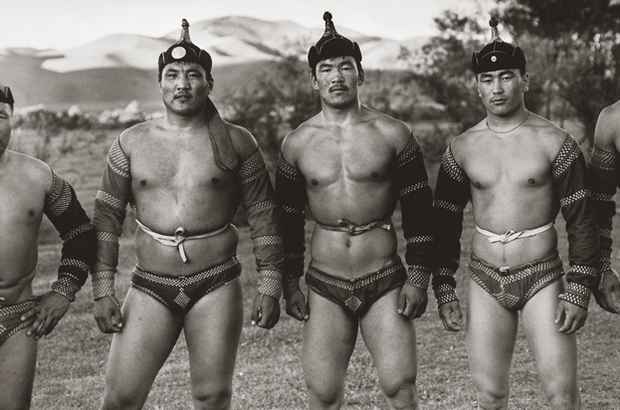"Salon 2009" Exhibition
Flomenhaft

This event has ended.
The Flomenhaft Gallery presents an exhibit that brings together the work of all the artists the gallery has represented. "Salon 2009" hearkens back to the Salons created by renowned dealers of past centuries.
"This exhibit says a great deal about the Flomenhaft Gallery. We represent many women, artists of varied ethnicities, painters, photographers, sculptors, and new to our gallery, a fiber artist, Estelle Kessler Yarinsky. Because we have not shown Yarinsky’s work before, it is fitting to introduce her first. Her use of fiber is not accidental, but the first medium that Jewish artists used. She is not only a Jewish artist, but she focuses on women. And her identity as Jewess and a woman are the vital questions she ponders and responds to in her extraordinary wall hangings, in which she weaves personages, not obviously, but always in a universal way. Joan Barber’s art clearly addresses a woman’s world of passion, fun, and sly glances at eroticism.
Siona Benjamin is a painter originally from Bombay, of Bene Israel, the ninth generation of Jews living in India. Her work is a mosaic inspired by Persian miniatures, Sephardic Icons and pop art. Dina Recanati, is originally from Egypt, now of the US and Israel. Her images emerge from experience and memory, both personal and collective, as an homage to ancient cultures, to earth and time. While her art is often a combination of painting and the sculptural, the three dimensions are conditioned by prevailing esthetics. It is never solely about formal issues and strategies but always rooted in metaphor.
Amy Ernst feels that her work has stemmed from her background, being the granddaughter of Max Ernst and daughter of Jimmy Ernst. But of course, it is also about life in general. She says, “I have lived so many lives: in the theater as a set designer, working in galleries, travel, post-graduate studies with artists such as John Baldessari and master printmaker Robert Blackburn.” Mira Lehr’s paintings are abstract but originate clearly in nature as described by art historian Irving Sandler, and are the most romantic works in our gallery. But they also reflect an artist forever seeking the next dimension in herself. One of her recent paintings was chosen to grace the entrance walls of the newly constructed Breast Cancer pavilion of the Sloan Kettering Cancer Center, New York.
Camille Billops and Emma Amos hope their images tweak prejudices, rules and societal notions. In this regard Flo Oy Wong’s work and that of Roger Shimomura respond as well. Shimomura’s work recalls his internment at age two in a camp during World War II. His crime was being born of Japanese descent. And Wong was brought up as a ‘paper person,’ hiding her identity because her mother had to come in to this country pretending to be her father’s sister. The Ellen Frank Illumination Arts Foundation’s work CITIES OF PEACE™ address the results of prejudice as she paints about those cities destroyed in war, or as in the case of Sarajevo, by hate. That work, of the destruction of libraries, would have to be called a response to ‘culturacide’.
Linda Stein and Jaune Quick-to-see Smith create art that demands their viewers protect this precious world. Photographer and Guggenheim Fellow Builder Levy intertwines social documentary with directed spontaneity, as in street photography, and a highly conscious aesthetic, as in art photography. He is concerned with a hardscrablle realism, a joi de vivre and the indomitabe human spirit. Paul Brach, who died in 2007, was a consummate colorist and a lover of the Arizona landscapes. In his works he immersed himself in these fondest memories. His wife Miriam Schapiro is renowned for heading up the feminist art movement and a major participant in the Pattern and Decoration movement that followed. Neil Folberg’s photography book of “Celestial Nights” won the best photography book of 2002 in New York and in 2008 another of his books, of his travels through the Impressionist world, won the bronze award as well. Finally, the Gerlovins’ photos of their own faces reflect their inner qualities, and are about their thoughts that became visible, shown through the allegoric games of a theatre of consciousness."
[Image: Builder Levy "Wrestlers" (1997) Nelson's gold-toned gelatin silver print on forte paper, 9 x 13 in.]
Media
Schedule
from May 07, 2009 to June 20, 2009
Artist(s)
Emma Amos, Joan Barber, Siona Benjamin, Camille Billops, Paul Brach, Amy Ernst, Neil Folberg, Ellen Frank Illumination Arts Foundation Inc., Rimma Gerlovina and Valery Gerlovin, Mira Lehr, Builder Levy, Dina Recanati, Miriam Schapiro, Roger Shimomura, Jaune Quick to see Smith, Linda Stein, Flo Oy Wong, Estelle Kessler Yarinsky